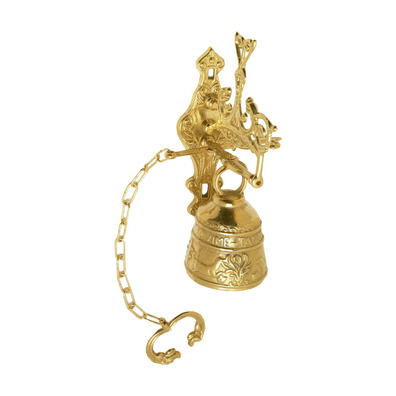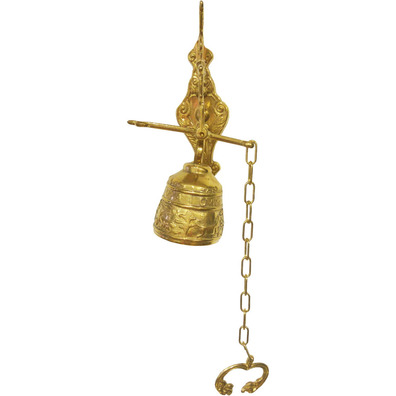Monastery bell | Golden brass
40,00€
Taxes includedCatholic product in stock. Products ready to be shipped. You can check the approximate delivery time during the purchase process.
Monastery bell | Golden brass Catholic metalware
- Monastery bell.
- Made of golden metal.
- Mouth bell diameter of 6.5 cm.
- Total height of 20 cm.
- Includes a handle for easy use.
- Designed to be anchored to the wall.
- Bell decorated with relief elements and the phrase "vocem meam-a ovime tangit"
What are monastery bells?
The monastery bell is a percussion musical instrument, usually in the shape of an inverted cup, found in monasteries and churches. It can be placed outside or inside the building, whether a monastery or a religious temple.
Originally, the bell was used to manage monastic life. When they heard the bell, the monks knew it was time for prayer, mealtime, etc.
This monastic bell is adapted to parish life. Its main function in parishes was to notify the faithful of the beginning of Mass or other events of special parish relevance. There are different bell rings to inform listeners of different events.
Monastery Bells | Vocem meam a ovime tangit
It is common for this piece of parish metalware to be decorated with the Latin expression "vocem meam-a ovime tangit".
This expression can be translated in two ways, with significant meaning.
-
Whoever touches me hears my voice
The first, Vocem meam a ovime tangit can be translated as Whoever touches me hears my voice. This expression is linked to the Word of God. People who come closer to hearing the sound of the bell, the "voice" of the bell, are drawn to the Church and the Word of God.
The bell, with its sound, marks the path to the Church, to the Word of Christ.
-
My voice touches (comforts) my sheep
This translation refers to the symbol of Jesus as a shepherd and the faithful as his sheep. It's interpreted as a reference to the voice of God or the Church, calling and guiding the precise, similar to how a shepherd calls his sheep. Jesus himself is called the good shepherd:
11 I am the good shepherd: the good shepherd gives his life for the sheep.
12 But the hireling, who is not the shepherd, to whom the sheep do not belong, sees the wolf coming, leaves the sheep, and flees, and the wolf snatches them and scatters them.
13 The hireling flees because he is a hireling and does not care about the sheep.
14 I am the good shepherd; I know my sheep, and mine know me.
15 Just as the Father knows me, and I know the Father; and I lay down my life for the sheep.
16 I have other sheep that are not of this fold; I must bring them also, and they will hear my voice; and there will be one flock, and one shepherd.
St. John 10:11-16.
The bell represents the Word of God that guides and comforts its faithful like the good shepherd does with his flock of sheep, protecting and guiding them to green pastures.






